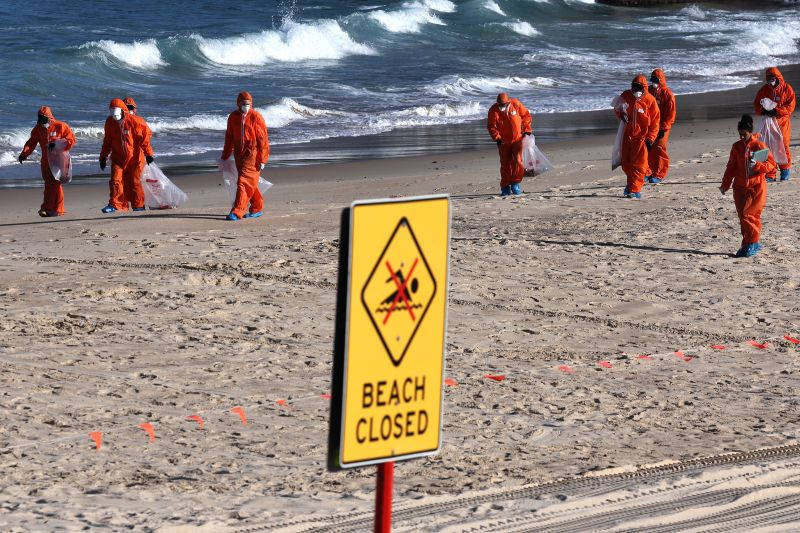
Stinky Mini ‘Fatbergs’: The Puzzling Black Spheres that Invaded Sydney Beach!
In the heart of Sydney’s bustling cityscape lies a set of gems hidden away, revealed only by the unpredictability of nature. These mysterious objects, also known as mysterious black balls, were recently discovered washed up on a Sydney beach. Completely unassuming on the outside, these are not the typical marine treasures that beach-loving residents and tourists look out for. These black balls possess a distinct characteristic that makes their discovery far less pleasant: a foul smell.
These black balls are small fatbergs, a term derived from fat and iceberg, which are lumps of hardened fat, oil, and grease mixed with household waste. They are typically found in the sewer systems, where they form when hot fat, oil, or grease is poured down the sink and then cools and solidifies. Often, these substances combine with non-biodegradable items, such as wet wipes, cotton buds, and sanitary products, to create fatbergs of different shapes and sizes.
The black balls washed up in Sydney have a rock-like exterior appearance. Their dark exterior comes from the hardened oils and fats, which are commonly black or brownish. But the wonder ceases when probed further, as the obnoxious odor of decomposition is released. Initially, these mysterious black balls puzzled locals and biologists alike as they attempted to decipher their origin, composition, and impact.
From scientific analysis, it was revealed that these black balls are mini fatbergs or ‘berglets’. This situation highlights the persistent issue of improper waste disposal, showcasing its dreadful capacity to reach unexpected sites such as a beach in Sydney. This phenomenon is not solely restricted to Australia, as similar occurrences of fatbergs washing ashore have been reported in several other coastal countries around the globe.
The appearance of these foul-smelling berglets on Sydney’s beaches is a significant environmental concern. Primarily because they represent the remnants of human waste and point to the underlying issue of pollution. They pose a considerable threat to marine life, as they can be mistaken for food and ingested, causing digestive problems and sometimes even mortality.
As unexpected and unwelcome as these mini fatbergs were, their discovery served as a tangible, olfactory reminder of the significant impact human behavior has on the environment, particularly on our precious marine ecosystems. If the sewage system continues to be misused, and if nondegradable, fat-based waste persists, the fatberg problem will only continue to grow.
From an outreach standpoint, the appearance of these fatberg balls in Sydney has sparked a dialogue about the importance of appropriate waste disposal. Communities are recognizing that simple actions like not pouring grease down the sink can have a substantial, positive impact on the environment.
Overall, the story of the mysterious black balls or mini fatbergs on Sydney’s beaches serves as an explicit signal, pointing to the broader environmental challenges. Although confronting, it offers an opportunity for advancements in waste management, promoting environmentally friendly practices to restore our beaches and protect marine ecosystems.
